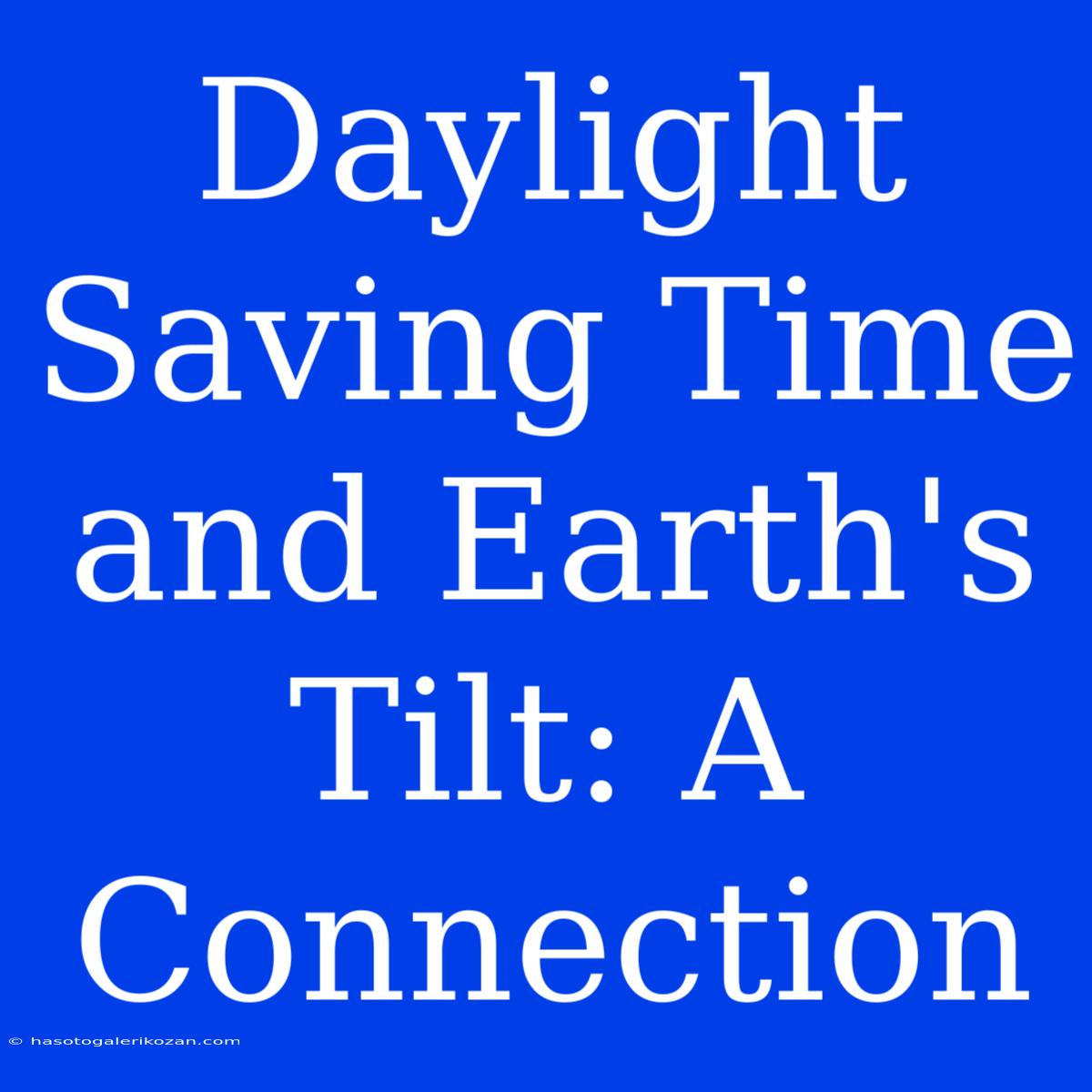Daylight Saving Time and Earth's Tilt: A Connection You Might Not Know
Daylight Saving Time (DST) is a familiar phenomenon, adjusting our clocks forward in the spring and back in the fall. But did you ever stop and wonder why we do it? Many people attribute it to maximizing daylight hours for activities, but the actual reason is intertwined with the Earth's tilt and our planet's journey around the sun.
Understanding Earth's Tilt
The Earth is tilted on its axis at approximately 23.5 degrees. This tilt is the fundamental reason we experience seasons. As the Earth orbits the sun, different parts of the planet receive varying amounts of sunlight depending on their position relative to the sun. During summer, a hemisphere tilted towards the sun experiences longer days and shorter nights, while the opposite hemisphere faces shorter days and longer nights.
The Role of Daylight Saving Time
Daylight Saving Time was initially proposed as a way to conserve energy during World War I. The idea was to shift our clocks forward by an hour, taking advantage of the longer daylight hours in the summer months. By doing so, people would require less artificial light during the evening, potentially reducing energy consumption.
The Link Between Earth's Tilt and Daylight Saving Time
While the initial motivation for Daylight Saving Time was energy conservation, it's important to understand how it relates to Earth's tilt. The concept of Daylight Saving Time is essentially a way to artificially manipulate the perceived time of sunrise and sunset based on the Earth's natural tilt.
Here's the breakdown:
- Summer: The hemisphere tilted towards the sun experiences longer days and shorter nights. This means sunrise occurs earlier and sunset happens later.
- Daylight Saving Time: By shifting the clock forward, we can further extend daylight hours into the evening, even though the sun's position hasn't changed. This allows us to enjoy more daylight hours for activities, potentially reducing our reliance on artificial lighting.
The Bottom Line
While Daylight Saving Time might seem like a simple clock adjustment, its origins and purpose are deeply connected to the Earth's tilt and our planet's movement around the sun. By shifting the clock, we effectively manipulate our perception of daylight hours, creating a more efficient use of natural sunlight, especially during the summer months.
